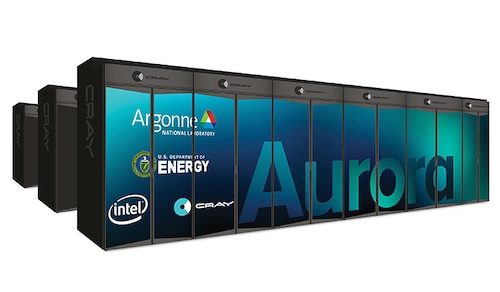Intel has joined hands with the U.S. Department of Energy (DOE) to launch its first supercomputer with an exascale performance in the U.S.
The supercomputer, going by the name Aurora, will be developed by Intel and sub-contractor Cray and delivered to DOE’s Argonne National Laboratory in Chicago by 2021.
The contract between Intel and DOE has been locked in at $500 million.
Aurora will be capable of providing an exaFLOP of performance or a quintillion floating point computations per second.
The new future supercomputer is faster than the already launched Summit supercomputer, which currently can perform 200 petaflops (or 200,000 trillion calculations per second).
The exascale supercomputer has the ability to make use of high-performance computing (HPC) and artificial intelligence (AI) in various areas such as cancer research, climate modeling, and veterans’ health treatments, and more. Aurora will be specially designed to analyze the large amount of data generated by DOE-owned equipment like particle accelerators, telescopes, and other detectors.
While details regarding the upcoming supercomputer are not fully disclosed, it is expected to come with an unknown Intel Xeon Scalable processor with the Xe compute architecture, a future generation of Intel Optane DC Persistent Memory, and Intel’s One API software.
Additionally, Aurora will incorporate Cray’s Shasta supercomputer system, with more than 200 cabinets, Slingshot high-performance scalable interconnect and the Shasta software stack optimized for Intel architecture.











